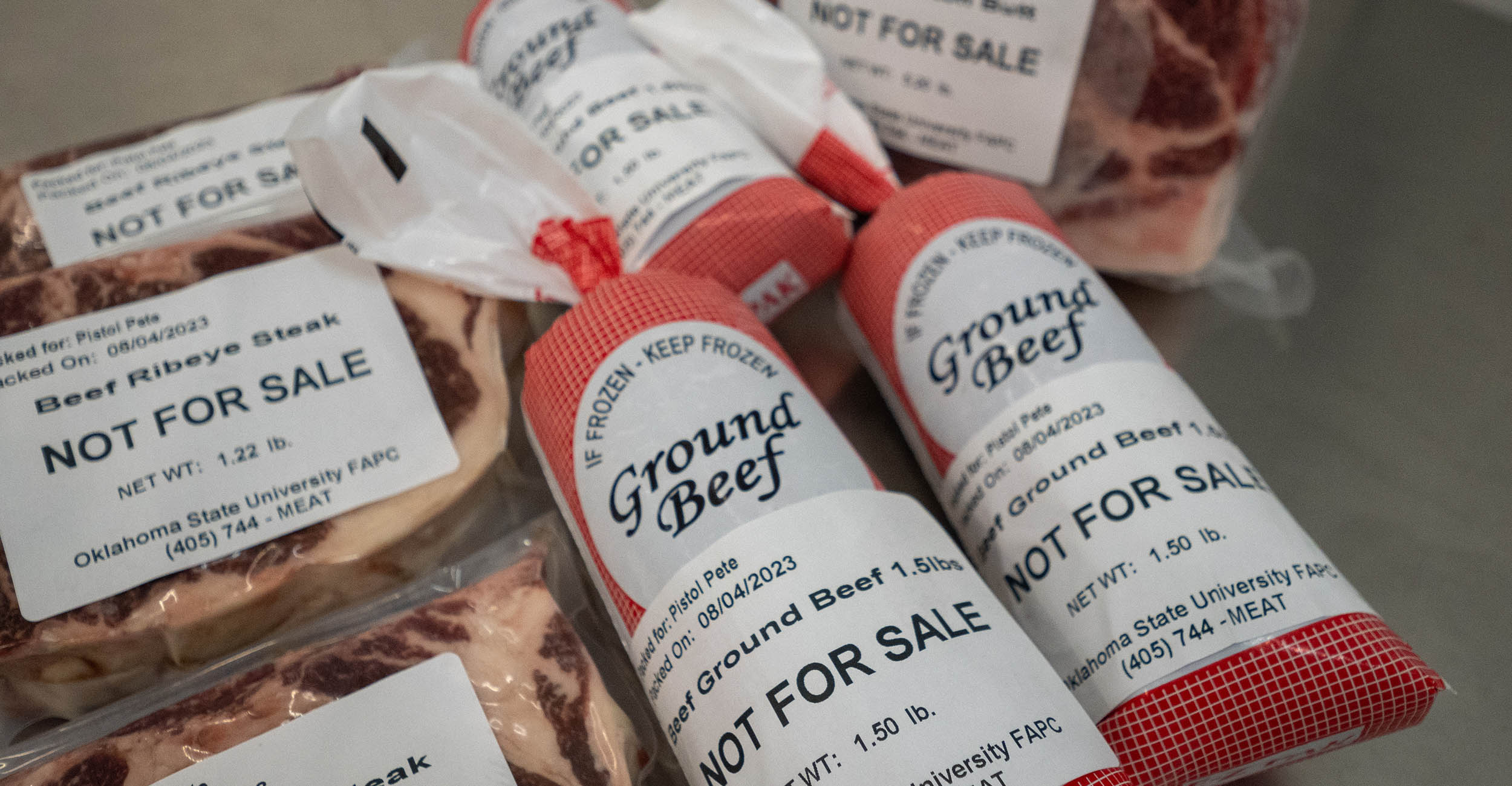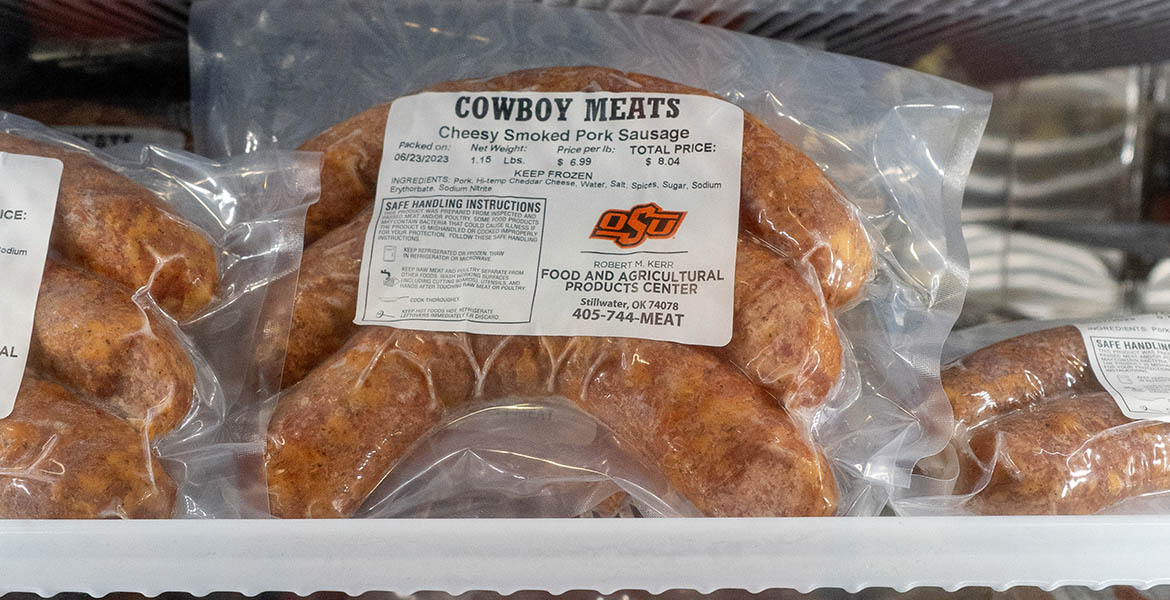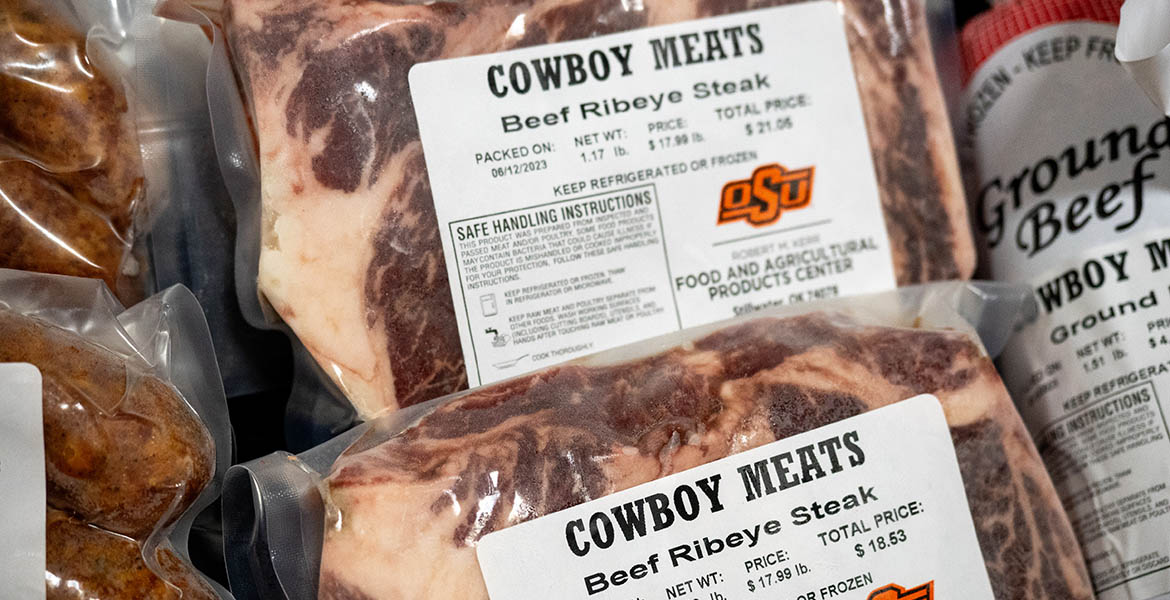
Meat processing plants grow with local consumer demand
Tuesday, August 8, 2023
Media Contact: Gail Ellis | Editorial Communications Coordinator | 405-744-9152 | gail.ellis@okstate.edu
As more consumers seek locally sourced products to connect with the land, many farmers and ranchers are stepping up to meet demand.
The market for direct-to-consumer beef has grown substantially during the past decade, sustaining the need for processing facilities. COVID-19 fueled even more business for processors, and Oklahoma’s regulatory agency took notice.
“In 2019, we had roughly 20 inspected plants across the state, and now we’re up over 30,” said Scott Yates, director of the Food Safety division at the Oklahoma Department of Agriculture, Food and Forestry. “We had 15 inspectors in 2019, and we just hired the 30th a few weeks ago.”
Educating ranchers and buyers
The industry is experiencing significant growth, but starting as early as the 1970s, processing plants were in decline in Oklahoma communities as people retired from the trade. Children chose other career paths over the family business, and many facilities closed their doors for good, Yates said. Meat consumers began to connect with producers, but the custom processing business had its seasonal ebbs and flows.
However, the pandemic gave mom-and-pop facilities another chance. Joel Jackson, pilot plant manager at the Oklahoma State University Robert M. Kerr Food and Agricultural Products Center, said that by May 2020, custom processing orders were through the roof.
“In April and May of 2020, when the big plants started shutting down, you couldn’t walk into a grocery store and get what you wanted,” he said. “If you didn’t have a freezer full of meat, that made people nervous.”
Processors were quickly booked through the end of the year into 2021 and even 2022. By the end of 2020, cancelations began popping up, but Jackson said the overall panic of a tight meat supply changed consumers’ habits.
“People who had never had an animal processed before asked producers if they could buy one,” he said. “For first-timers, it led to a big learning curve and an opportunity for education by producers and processors.”
Jackson wrote an OSU Extension fact sheet that details the basics of animal processing, including why a 1,000-pound steer will not produce 1,000 pounds of meat, how to select cutting instructions and what cuts are available. The information is not only valuable to the buyer but also to those ranchers who might be new to custom processing.
“If you’re going to sell beef, you should be familiar with what to expect on a side, quarter or whole animal in terms of yields,” Jackson said. “You’re going to get asked all those questions. Most people aren’t going to pay $1,000 to $3,000 if they don’t know what they’re going to get.”
Jackson and his colleagues are offering learning opportunities for producers interested in direct-to-consumer meat sales with two workshops in August and September. Ranchers will learn about the regulatory aspects of the business, including what type of processor is required for each type of sale.
“If you want to keep it simple, pre-selling your livestock is the best option,” Jackson said. “Custom exempt processing removes the need for inspection, permits and even label approvals. It’s just like you’re selling a live animal to a neighbor or family member, and it can be processed at a local custom plant.”
For those who want to take their beef business to the next level and sell meat at local stores or farmers markets, the workshops will cover state and federal meat inspections, proper permitting, labeling and other associated regulations.
“If you’re storing inspected meats that will enter into commerce, you’ll need to register with the state,” Jackson said. “We’ll give you everything you need to know to start selling product and make sure you’re doing it right.”


An economic force
Although custom processing has returned to pre-COVID numbers, Yates at ODAFF said interest in processing facilities continues to climb, especially in the eastern half of the state. The Coronovirus Aid, Relief and Economic Security Act and other economic grants that stemmed from the pandemic gave meat processors the cash they needed to build from scratch or expand.
“We’re still getting calls from folks who are wanting to build plants,” he said. “We’ve got people building or getting their Hazard Analysis and Critical Control Point plans ready for inspection, and some facilities are transitioning from state inspected to federal, so they can ship to other states.”
Yates said ODAFF has a good working relationship with the USDA’s Food Safety and Inspection Service. Custom processing plants that sell freezer beef not packaged for individual sale only require quarterly inspections, but those used to process meat marketed individually to the public are regularly inspected on days when processing occurs. Plants in Oklahoma with a Talmadge-Aiken federal classification can export overseas and are inspected by Oklahoma regulatory officials who are familiar with the community.
“It’s a good thing we’re getting back to more local processors,” Yates said. “It’s good for small-town economies. Most of our establishments have anywhere from five to 10 or 25 to 30 employees.”
New opportunities in agriculture
Outwest Farms, near Cleveland, Oklahoma, is one of the many value-added farming and ranching operations contributing to this growing niche market. When 32-year-old Jake Miller finished his bachelor’s degree a few years ago, he wanted to find a job and stay in Oklahoma. His family had always raised cattle as a food source for themselves, but Miller saw potential in a different group of customers.
“You can buy a whole or half beef pretty much everywhere, but I had not seen a lot of people sell by the pound,” he said. “A lot of families don’t have freezer space for a whole animal, and selling it by the pound gives them a chance to buy local.”
Miller, his parents and his two siblings established Outwest Farms and processed their first animals at an Oklahoma-based federal facility in 2018. Building the business took time, but it quickly expanded after the pandemic forced the family to shift their marketing efforts.
“In 2021, we did a complete rebuild of our customer base and moved from mainly focusing on Facebook to Instagram and Google ads,” Miller said.
With the help of a couple of employees, Outwest Farms offers beef, pork, lamb and chicken with free home delivery in the Oklahoma City, Tulsa and Stillwater areas. Because it uses a federal processing facility, the farm can also ship out of state. Miller said the biggest hurdle now is competing with national distributors.
“The main thing all customers want is a connection to where their food comes from,” he said. “They just need to know you exist. More people my age are finding new opportunities to continue to farm and do family business.”
